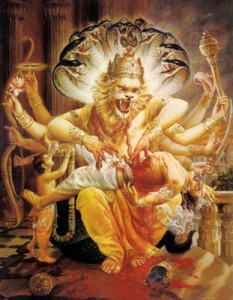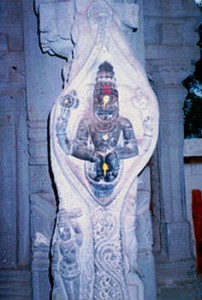
When Lord emerged out of pillar in his fierce and effulgent form, all the devatas (demigods) exclaimed “Aho Balam (what great strength!)”.Sthala purana speaks this wonderful pastime as an additional note to Lord Narasimha Lila mentioned in 7th canto of Srimad Bhagavtam.
“Ahoveeryam! ahoshouryam! Aho baahu parakrama!
Naarasimham paramdaivam ahobhilam! ahobalam!”
It adds that on the plea of Prahlada, Lord Narasimha continues to reside at Ahobalam on the peak “Garudachala”. Since this place was contaminated by blood of Hiranyakashipu and his army, Lord invoked River Mandakini to clean it. Since the river cleansed the dirt (sins) that causes birth (bhava), she came to be called as River “Bhavanashini”. Laxmi Devi appeared and sat on the folded leg of the lord. The forest grove thus got their name as Laxmivan. Seeing this beautiful sight of Lord and her consort, all great sages assembled and sang praises and hymns from Vedas. The mountain from where they chanted came to be called as “Vedadri”.
Ahobilam also got its name because of bila (cave). Long long ago (even before Lord Narasimha appeared to kill Hiranyakasipu). Garuda performed severe penance with a desire to have the darshan of Lord in Narasimha form. Pleased with him, Lord guided Garuda to see his Narasimha avatar form in a nearby huge cave. Garuda proceeded and was benedicted to see this beautiful form in this cave. Hence this area also got the name as place of beautiful cave -“Ahobilam”.
Following are the famous praises/ songs on Lord of Ahobalam-:
- “Narasimha Panchamritam” – these 5 verses were sung by Lord Ramachandra when he came here.
- “Angan naalam” – was sung by the great Thirumanghai Alwar.
- “Sri Laxmi Narasimha pancaratna stotra” & “ Karaavalamba stotra” are two very famous hymns composed by Adi Sankaracharya when he came here.
Many great devotees like Ramanujacharya, Vedanta desika, Annamacharya also rendered service here and many of them composed beautiful prayers and songs at the feet of Lord Narasimha. Srila Ramanujacharya visited this temple in 11th Cent. A.D, Vedanta Desika (1268-1379 A.D.) while on his religious tour, visited Ahobilam. The great king, Vikramaditya (1076-1106 A.D) of the Western Chalukyas, is said to have worshipped the main deity of the temple.
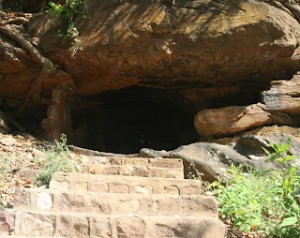 Cave of Ramanujacharya in Ahobilam.
Cave of Ramanujacharya in Ahobilam.
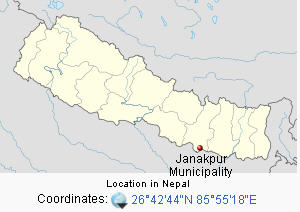
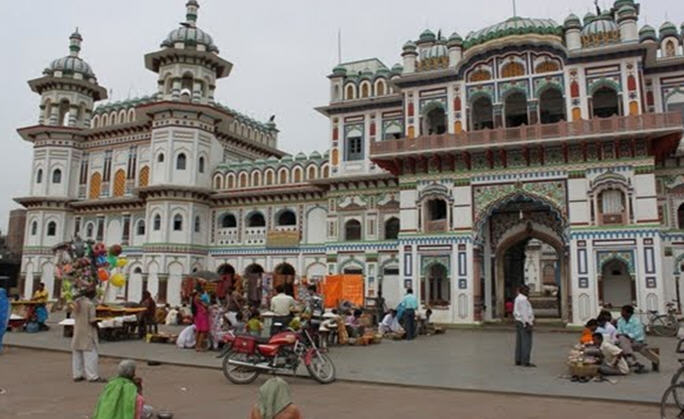
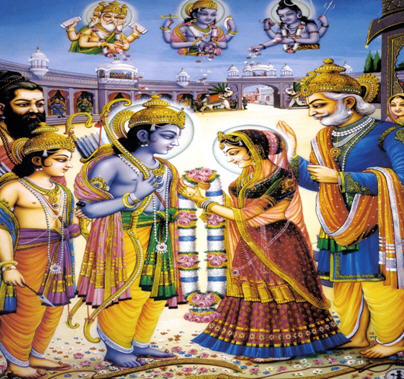 • Janakpur, historically called Mithilanchal, is the centre of the ancient Maithil culture, which has its own language and script.
• Janakpur, historically called Mithilanchal, is the centre of the ancient Maithil culture, which has its own language and script.